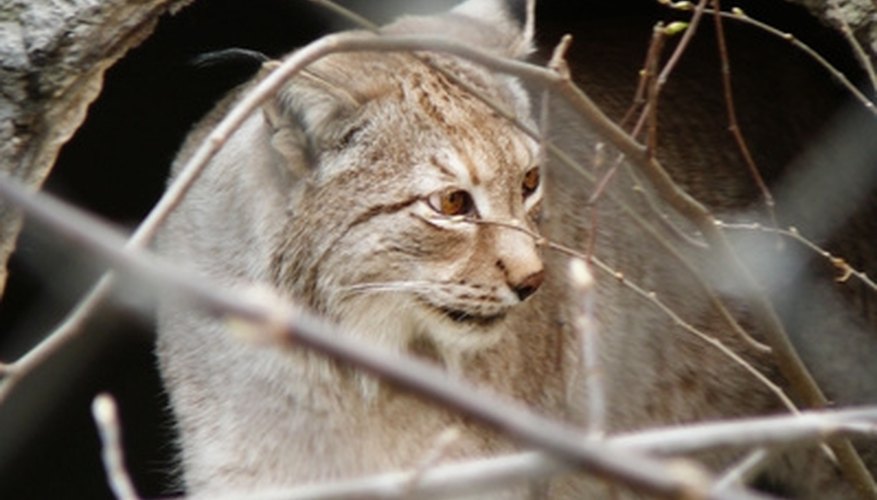
Native Americans used the brains of the animal to tan its hide as it contains an enzyme that both softens and preserves the skin. While there are chemical options, some taxidermist believe brain tanning still gives the best results as, when done correctly, it produces a supple, well preserved pelt without toxic chemicals. Preserving a bobcat hide is a simple process, but you must keep in mind that a bobcat has a thinner skin, and is therefore more fragile, than an animal like a deer and care must betaken not to tear the pelt.
Items you will need
Skinning knife
Fleshing knife
Mild shampoo
Fleshing beam
One cup brains
Blender
Hot water
Plastic bag
Rope
Remove the hide from the bobcat with the skinning knife, taking care not to cut into the hide.
Place the hide over the fleshing beam, fur side down. Hold it in place by keeling on the edge of the hide, closest to you, and scrape off any flesh, fat and attaching membrane with the fleshing knife. Continue scraping until you are down to the skin. You can tell when you have reach the skin by running your fingers across the hide as it will no longer feel slippery.
Wash both sides of the pelt with the shampoo. Rinse thoroughly and hang up, out of the sun, to dry.
Heat the water in a microwave or saucepan. Place the brains in the blender and cover with hot water and liquefy, adding water until it reaches the consistency of a milkshake.
Saturate both sides of the hide thoroughly, working the mixture well into the pelt. Use more than you think you need. Roll the saturated pelt up and place it in the plastic bag. After two to three hours remove the pelt from the bag and work it in your fingers to see if it is pliable. If not, add more brains and place the hide back in the bag for another hour or two.
Remove the hide from the bag and wipe as much of the brain mixture as possible from the hide and hang it up to partially dry. When it has dried just to the point of feeling damp begin to work the hide. Do not allow it dry completely, or to will become very difficult to work.
Tie the rope, as tightly as possible, between two stationary objects. Place the hide over the rope, fur side up, and rub the skin side vigorously across the rope. The hide will finish drying, from the heat generated by the friction, as you work it. Continue to rub the hide until it is dry and soft. Do not work the fur side as it will damage the hair.
Warnings
- Take special care around the edges of the abdominal area as this is especially thin on a bobcat and will tear if too much force is applied.
- Because of concerns of rabies it is best to not use the brains of carnivores like bobcats. Instead use cow, sheep or pig brains available at most larger supermarkets.
Tips
- The more you work the hide against the rope, the softer it will become.
References
- Buckskin: The Ancient Art of Braintanning: Steven Edholm and Tamara Wilder: 2001
Tips
- The more you work the hide against the rope, the softer it will become.
Warnings
- Take special care around the edges of the abdominal area as this is especially thin on a bobcat and will tear if too much force is applied.
- Because of concerns of rabies it is best to not use the brains of carnivores like bobcats. Instead use cow, sheep or pig brains available at most larger supermarkets.



